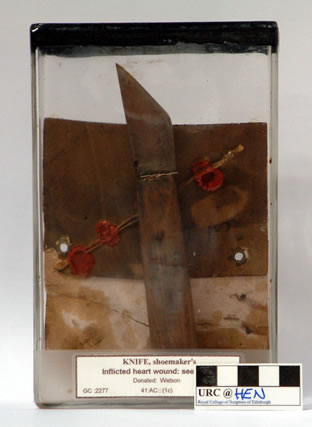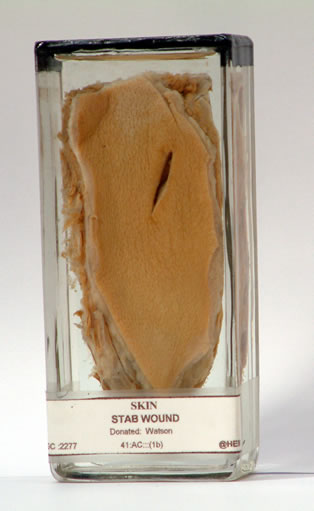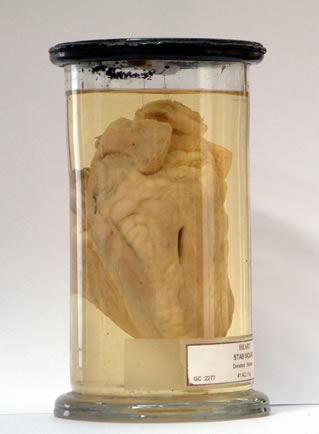
The great object of the police is Prevention of Crime.
Alfred John List, Police Superintendant
The Public Authorities: The Police and the Justiciary
Edinburgh was one of the first cities in Great Britain to establish a police department, and city policemen were generally prompt and professional in investigating crimes. The Police Surgeon, Alexander Black, followed strict procedures for handling forensic evidence, such as comparing the alleged weapon, like the knife pictured above, with the size of wounds inflicted on the heart. But the Police Establishment, as it was known, was a branch of city administration, and had numerous duties beyond criminal investigation, including "apprehending and punishing vagrants and disorderly persons, suppression of common begging, removing nuisances, lighting and cleaning the streets and passages," and generally preserving "peace and good order. " They relied on city residents to bring suspected crimes to their attention. For that reason their inquiry into Burke's and Hare's activities only began once Ann and James Gray, two of Burke's lodgers, reported their discovery of Madgy Docherty's body.
The Scottish legal system was enlightened for its day. The case, as a capital crime, was tried by the High Court of Justiciary in Parliament Square. The public prosecutor was the Lord Advocate, Sir William Rae, Scotland's chief legal official. It was a long standing custom among Scots advocates (trial lawyers) for defense counsel to be supplied to the accused free of charge. Burke and M'Dougal were defended by two of the finest Edinburgh lawyers, James Moncrieff and Henry Cockburn.
Their trial in December 1828 focused attention national and international attention on the body-trade in Britain, which was illegal, widespread, and lucrative. The previous spring, well before anyone knew about Burke and Hare, a Parliamentary committee had been convened to investigate the way in which medical schools obtained "subjects." The Edinburgh murders became inextricably linked with Parliament's deliberations in popular accounts of the subsequent legislation, known as the Anatomy of Act of 1832.
Click on thumbnails to view slideshow.
Images courtesy of the Museums of the Royal College of Surgeons of Edinburgh.


